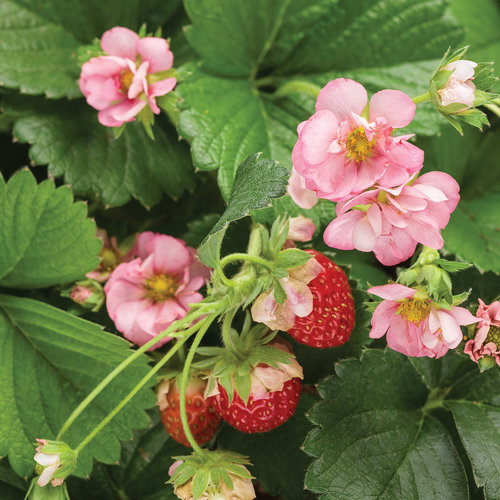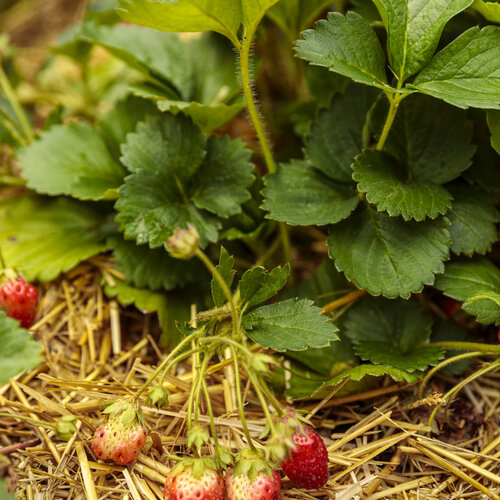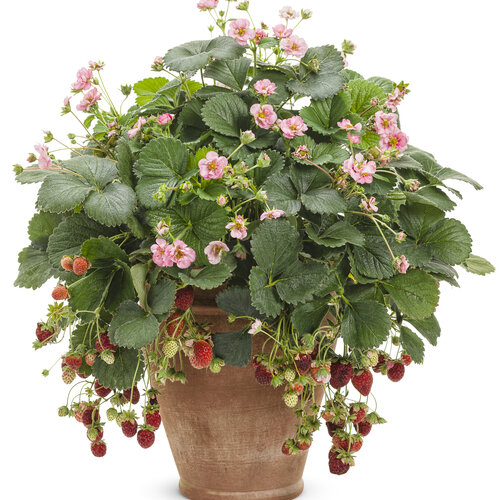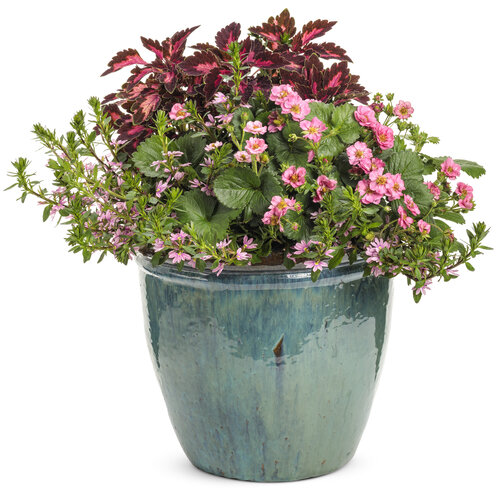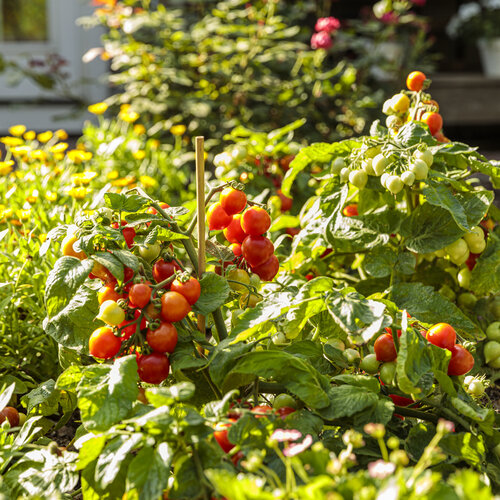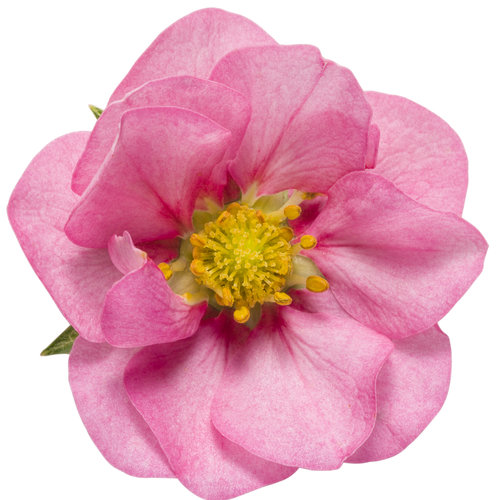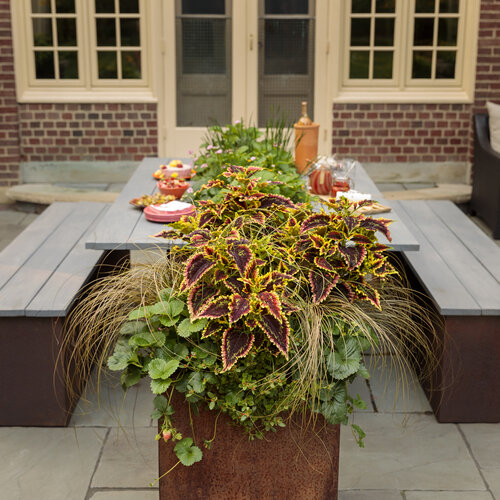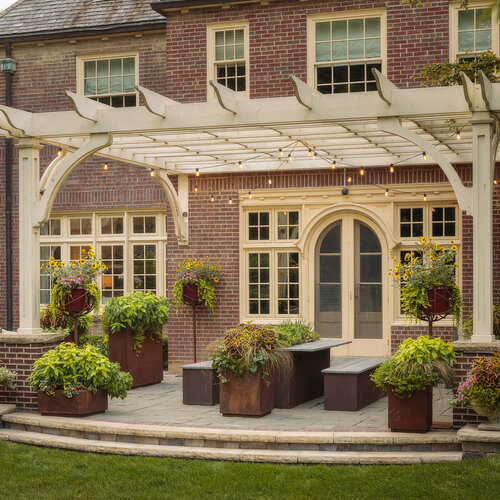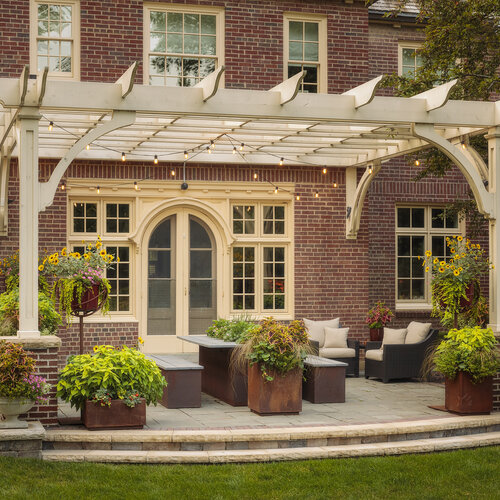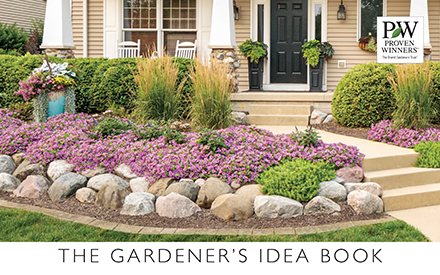I have had great luck with these. They're growing well and healthy! I only had room for two plants so I'm not overwhelmed by strawberries, but I have enough for it to be a fun addition to our "crops". I'm not sure if they're annuals in my zone or not, but hoping to see them again next year!
Berried Treasure® Pink Strawberry Fragaria ananassa
- Sun
- Spring
- Summer
- Fall
-
Details
12 - 16 Inches6 - 12 Inches18 - 24 Inches30cm - 41cm15cm - 30cm46cm - 61cmFeatures
Double the Delight! Why choose between growing flowers or fruit? This wonderful plant is both highly ornamental and it produces tasty fruit on ever-bearing plants. The semi-double flowers are gorgeous in their own right and lip-smacking sweet strawberry together all summer. It's a little like having your cake and eating it too. Planting in a container will show off the fruit to best effect, but it can also be grown in gardens. Short runners can develop over time, which may add a trailing element to the plant. These runners can be trimmed back, if you prefer to do so or can be left as is. The 12-16" tall, mounding plants are just the right size for your patio pots or hanging baskets. They will flower and produce fruit the season they are planted if you buy plants or start seeds indoors, which means the plant can be grown as an annual. However, they are also quite hardy and will be perennial in zones 4-9.
EdibleContinuous Bloom or RebloomerDisease ResistantLong BloomingProduces BerriesHeat TolerantDeadheading Not NecessaryAttracts:BeesCharacteristics
Plant Type:AnnualHeight Category:ShortGarden Height:12 - 16 Inches 30cm - 41cmSpacing:6 - 12 Inches 15cm - 30cmSpread:18 - 24 Inches 46cm - 61cmFlower Colors:PinkFlower Shade:PinkFoliage Colors:GreenFoliage Shade:GreenHabit:MoundedContainer Role:FillerPlant Needs
Light Requirement:SunThe optimum amount of sun or shade each plant needs to thrive: Full Sun (6+ hours), Part Sun (4-6 hours), Full Shade (up to 4 hours).
Maintenance Category:ModerateBloom Time:Planting To FrostHardiness Zones:4a, 4b, 5a, 5b, 6a, 6b, 7a, 7b, 8a, 8b, 9a, 9bWater Category:AverageSoil Fertility Requirement:Average SoilSoil Fertility Requirement:Fertile SoilUses:ContainerUses:Edging PlantUses:GroundcoverUses:LandscapeUses:Mass PlantingUses Notes:Best used in containers including patio planters and hanging baskets, where the fruit can be shown off and easily picked. However, they also work well in gardens.
Maintenance Notes:To keep your Berried Treasure plant looking its best, the soil should be kept evenly moist and using a regular fertilization program will produce the most prolific berry crop.
Even if the plants are started by seed, they should set fruit in the first year and those purchased as plants in spring will certainly produce fruit in the first season.
Growing Berried Treasure from Seed:
If you are growing Berried Treasure from seed, starting the seeds indoors will give the plants a head start, which will result in ripe fruit earlier in the season.
Seed Prep - Strawberry seeds will germinate better if they are chilled in your freezer or refrigerator for 3-4 weeks prior to planting.
Planting - Once seeds have received their chill period, start them indoors 8 weeks before the last frost in your area. The seeds should germinate in about 2-3 weeks, but could take a little longer. Strawberry seeds are tiny and should be sown on the soil surface.
All of the Berried Treasure varieties perform similarly, however, there are some differences. White flowers are typical for strawberries and are therefore the easiest plants to develop, with pink not far behind. Red flowers, however, are a much more difficult color to develop. While all of the Berried Treasure plants grow well and set fruit prolifically, we have noted that Berried Treasure Red does tend to be slower to germinate. The key to successful germination is to keep the humidity high during the whole germination period. If you are growing all three colors, expect the red to take longer and be sure to keep the humidity high until all of the seedlings are growing well.
Thinning - If the seedlings are crowded, you may want to thin them to allow more robust growth of the remaining seedlings.
Transplant - Plant the seedlings outdoors about 3 weeks after the threat of frost is past. If you live where frost isn't a concern, that will be about 11 weeks after planting the seeds. Plant 3 or more seedlings per container, depending on container size. In the landscape, plants should be spaced 18-24" apart. Rows should be about 36" apart.
Grow your strawberries in at least 6 hours of direct sun a day. More sun is desirable and will help produce a bumper crop of fruit.
The plants should be kept evenly moist and fed regularly for the best results.
-
3 Reviews
51413211Browse reviews from people who have grown this plant.-
KC, New York, United States, 1 year ago
-
I ordered these seeds because I always see Laura planting them on Garden Answer and thought they'd be a delight for my kids. I can't find the plant starts in greenhouses in my area. I followed the directions to a T, but no germination on them. Everyone was so disappointed. The seeds are minuscule, and there's not enough in the packet to try again if it doesn't work out. I will give PW points on providing extra instructions for successful sowing, but it didn't work for us.
Alyssa, Illinois, United States, 1 year ago -
I ordered 4 plants last December and planted them in the spring in my Earth Box. Boy, did they take off. By June 24th, they were healthy and blooming. The first strawberries were quite small and eaten by the birds. By the time I put protection on, the plants had slowed down. I noticed over the next few weeks that some of the flowers just turned brown and didn't develop a berry. I did some trimming and reduced the number of flowers and the berries seemed healthier. The plants produced more runners that I had expected. Next year I am moving them to another container, a veg trug, so I can add better bird protection. They sure are worth it to me!
Elaine Van Doren, Pennsylvania, United States, 2 years ago
1 Recipe
- Take a BreakRecipe
What you'll need:
-
1
-
1
-
1
-
-



